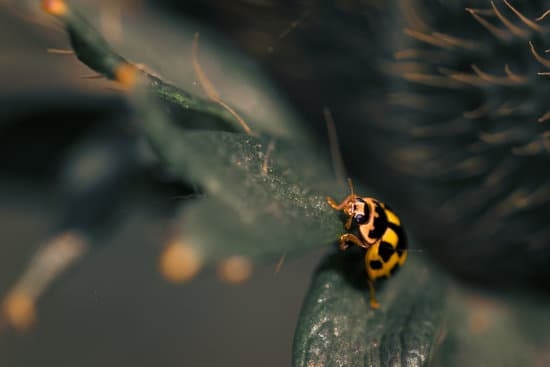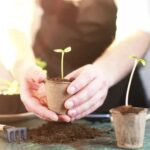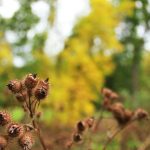South African gardening ideas are rich in diversity, stemming from a unique blend of cultures, climates, and landscapes that make this country a paradise for garden enthusiasts. From the vibrant colors of indigenous flora to innovative water-saving techniques, South African gardens exude a charm all their own.
The climate and geography of South Africa play a pivotal role in shaping the gardening practices of this region. With diverse ecosystems ranging from arid deserts to lush forests, gardeners have adapted their techniques to suit the specific conditions of each area. Understanding how these factors influence plant growth is essential for creating a successful garden that thrives in the South African environment.
When it comes to selecting plants for your South African garden, incorporating native species is not only aesthetically pleasing but also beneficial for the local ecosystem. From striking succulents like Aloe Vera to delicate Fynbos flowers, there is a vast array of native plants that can add depth and character to your outdoor space.
By embracing traditional gardening techniques and utilizing water-wise strategies, you can create a sustainable and visually stunning garden that reflects the beauty of South Africa’s natural landscapes.
Climate and Geography of South Africa and How It Affects Gardening
South Africa boasts a diverse climate and geography, which greatly influences the gardening practices in the region. With an array of microclimates across the country, from Mediterranean to subtropical and even desert regions, South African gardeners have a wide variety of options when it comes to plant selection and cultivation.
The Western Cape experiences a Mediterranean climate with mild, wet winters and hot, dry summers, while areas like Gauteng have a subtropical highveld climate with hot, rainy summers and cool, dry winters.
When planning your South African garden, it is essential to take into consideration the specific climatic conditions of your region. Understanding the rainfall patterns, temperature fluctuations, and soil types will help you select plants that are well-suited to thrive in your area.
For those living in drier regions like the Karoo or parts of the Northern Cape, water-wise gardening is crucial to conserve this precious resource. Consider adding indigenous succulents such as Aloe vera or Crassula ovata to your garden for a low-maintenance yet striking landscape.
In addition to climate considerations, the geography of South Africa plays a significant role in gardening practices. The country’s varied topography includes mountains, savannas, coastal plains, and deserts, each offering unique opportunities for garden design.
Whether you live near the coast and want to incorporate seaside plants like Agapanthus or Clivia into your garden or reside in the Drakensberg mountains where hardy alpine plants like Watsonia flourish, embracing the natural beauty of South Africa’s landscapes can inspire truly stunning gardens.
Native South African Plants and Flowers to Include in Your Garden
South Africa is known for its unique and diverse flora, making it a paradise for gardening enthusiasts looking to incorporate native plants and flowers into their gardens. By including these indigenous species in your garden, you not only showcase the beauty of South Africa’s natural landscapes but also support local biodiversity and conservation efforts.
Fynbos
One of the most iconic plant types found in South Africa is fynbos, which includes species like proteas, ericas, and restios. These plants thrive in the nutrient-poor soils of the Western Cape region and are well-adapted to the Mediterranean climate of South Africa. Consider incorporating fynbos species in your garden for their unique shapes, colors, and resilience to drought conditions.
Succulents
Succulents are another popular choice for South African gardens due to their ability to store water in their leaves and stems, making them perfect for water-efficient landscaping. Species like aloes, crassulas, and euphorbias can be found throughout the country and provide interest with their varied textures and forms. Create striking displays by clustering different types of succulents together in containers or rock gardens.
Indigenous Bulbs
South Africa boasts a wide variety of stunning bulbous plants that can add bursts of color to your garden throughout the year. Bulbs like ixias, watsonias, and agapanthus are not only beautiful when in bloom but also easy to grow and maintain. Plant these bulbs in well-draining soil under full sun conditions to ensure they thrive in your garden.
By incorporating these native South African plants and flowers into your garden design, you can create a unique space that reflects the beauty and diversity of this incredible country. Experiment with different combinations, textures, and colors to discover what works best for your specific growing conditions while honoring the rich botanical heritage of South Africa.
Stay true to traditional gardening practices while exploring new ideas to make your garden a vibrant oasis that highlights the best of South African gardening ideas.
Traditional Gardening Techniques Used in South Africa
When it comes to South African gardening ideas, incorporating traditional gardening techniques can add a unique and cultural touch to your garden. One popular technique used in South Africa is companion planting, where certain plants are grown together to help each other thrive.
For example, planting marigolds with tomatoes can help deter pests and improve the health of the tomato plants. This practice not only provides practical benefits but also reflects the close relationship between different plant species in traditional South African gardening.
Another traditional technique often used in South African gardens is crop rotation. By rotating crops each season, gardeners can help maintain the fertility of the soil and reduce the risk of pests and diseases. This sustainable approach to gardening has been practiced for generations in South Africa and continues to be an effective method for maintaining healthy and productive gardens.
Furthermore, hand-watering is a common gardening technique in South Africa, especially in regions where water conservation is crucial. Many gardeners use watering cans or buckets to carefully water their plants, ensuring that each plant receives adequate moisture without wasting water.
This hands-on approach to watering not only conserves water but also allows gardeners to connect more closely with their plants and observe their needs more effectively. Incorporating these traditional gardening techniques into your own garden can not only enhance its beauty but also promote sustainability and environmental stewardship.
Tips for Creating a Water-Efficient Garden in South Africa
South Africa is known for its diverse climate and geography, which can pose challenges when it comes to maintaining a garden. With water scarcity being a significant issue in many parts of the country, creating a water-efficient garden is not only environmentally responsible but also practical. By implementing some simple strategies, you can enjoy a beautiful garden while conserving water. Here are some tips for creating a water-efficient garden in South Africa:
- Choose native South African plants: Native plants are adapted to the local conditions and generally require less water than exotic species. Look for drought-resistant plants like Agapanthus, Aloes, and Succulents to incorporate into your garden.
- Implement mulching techniques: Mulch helps retain moisture in the soil by reducing evaporation and suppressing weed growth. Organic materials like compost, bark chips, or straw can be used as mulch in your garden beds.
- Install a drip irrigation system: Drip irrigation delivers water directly to the roots of plants, minimizing wastage through evaporation or runoff. It provides targeted watering and ensures that each plant receives the right amount of moisture.
Aside from these practical considerations, incorporating sustainable gardening practices into your routine can further enhance your efforts towards creating a water-efficient garden. Consider harvesting rainwater to use for irrigation, practicing smart watering techniques (such as watering early in the morning or late in the evening to reduce evaporation), and regularly monitoring your garden’s hydration needs to avoid overwatering.
By following these tips and embracing water-efficient gardening practices specific to South Africa, you can create a thriving garden that not only conserves precious resources but also reflects the unique beauty of South African flora. Whether you have a small urban garden or a sprawling rural landscape, incorporating these ideas will help you cultivate an environmentally sensitive and visually stunning outdoor space.
South African Garden Design Inspiration
South Africa’s diverse landscape, rich biodiversity, and vibrant culture serve as a wellspring of inspiration for unique and beautiful garden designs. When seeking South African gardening ideas, look no further than the country’s own natural surroundings for guidance. From the arid beauty of the Karoo to the lush forests of Mpumalanga, there is a wealth of design elements waiting to be incorporated into your garden.
One popular trend in South African garden design is to embrace the concept of “fynbos gardens.” Fynbos is a unique biome found in the Western Cape region, characterized by plants such as proteas, ericas, and restios.
These plants not only add color and texture to your garden but are also water-wise choices that thrive in South Africa’s often dry climate. By incorporating fynbos species into your garden, you can create a stunning display that celebrates the country’s indigenous flora.
In addition to fynbos gardens, drawing inspiration from traditional South African homesteads can also lend a cultural touch to your garden design. Incorporating elements such as thatched roofs, clay pots, and wooden furniture can evoke a sense of heritage and history in your outdoor space.
Embracing local craftsmanship, such as woven baskets or beaded decorations, can further enhance the authenticity of your South African-inspired garden. By blending traditional elements with modern aesthetics, you can create a truly unique and meaningful outdoor space that reflects the beauty and diversity of South Africa.
| Element | Description |
|---|---|
| Fynbos Gardens | Incorporating native fynbos plants for water-wise gardening |
| Traditional Homestead Elements | Adding features like thatched roofs and clay pots for cultural flair |
| Local Craftsmanship | Utilizing woven baskets and beaded decorations for authenticity |
Seasonal Gardening Tasks and Activities for South African Gardens
South Africa’s diverse climate and geography create unique challenges and opportunities for gardeners throughout the year. Understanding the seasonal variations can help you plan and maintain a thriving garden in this region. In South Africa, the country experiences a summer rainfall and winter rainfall pattern, which significantly influences the type of plants that will thrive during different seasons.
During the summer months, which typically last from October to March in South Africa, gardeners can focus on tasks such as planting heat-tolerant vegetables like tomatoes, peppers, and eggplants. It is also an ideal time to focus on flowers that bloom in the heat, such as bougainvillea, hibiscus, and succulents. Regular watering is essential during this period to combat the hot temperatures and dry conditions.
As winter approaches in South Africa from April to September, gardeners can shift their focus to cool-season crops like broccoli, lettuce, and peas. It is also a good time for pruning dormant trees and shrubs before new growth begins in the spring. Additionally, adding mulch to insulate plant roots and conserve moisture becomes crucial during the colder months.
| Season | Gardening Tasks |
|---|---|
| Summer (October – March) | Planting heat-tolerant vegetables and flowers; regular watering |
| Winter (April – September) | Planting cool-season crops; pruning dormant trees; adding mulch for insulation |
Sustainable Gardening Practices Specific to South Africa
Water-Wise Gardening
One of the key sustainable gardening practices in South Africa is practicing water-wise techniques due to the country’s often arid climate and periodic drought conditions. To minimize water usage in your garden, consider planting indigenous plants that are adapted to the local conditions and require less watering. Additionally, implementing mulching techniques can help retain soil moisture and reduce evaporation, thus conserving water.
Composting and Soil Health
Another important aspect of sustainable gardening in South Africa is maintaining healthy soil through composting. By creating your own compost from organic kitchen waste and garden clippings, you can improve soil fertility, structure, and overall health. Healthy soil not only enhances plant growth but also aids in water retention, reducing the need for frequent irrigation.
Integrated Pest Management (IPM)
To minimize the use of harmful chemicals and pesticides in your garden, consider adopting integrated pest management practices specific to South African gardening. This approach focuses on preventing pest problems through techniques such as companion planting, attracting beneficial insects, and maintaining a balanced ecosystem in your garden. By incorporating IPM strategies, you can promote a healthier environment for both your plants and local wildlife while reducing the negative impact on the ecosystem.
By incorporating these sustainable gardening practices into your South African garden design, you can not only create a beautiful outdoor space but also contribute to preserving the natural environment for future generations. Embracing water-wise techniques, promoting soil health through composting, and adopting integrated pest management strategies are essential steps towards cultivating a more sustainable and eco-friendly garden in South Africa.
How to Incorporate Traditional South African Cultural Elements in Your Garden Design
Incorporating traditional South African cultural elements into your garden design can add a unique touch to your outdoor space and connect you to the rich heritage of the region. From colorful art pieces and sculptures to traditional patterns and textures, there are various ways to infuse South African culture into your garden.
One popular way to incorporate traditional elements is by using vibrant colors and patterns inspired by Ndebele or Zulu designs in your garden decor. Consider adding brightly colored pots, cushions, or even painting a mural with geometric shapes on a wall or fence. These bold and lively accents can bring a sense of energy and authenticity to your outdoor space.
Another idea is to include traditional South African plants that hold cultural significance, such as the iconic Protea flower or indigenous succulents like aloes and spekboom. These native plants not only thrive in the South African climate but also contribute to the overall aesthetic of your garden, creating a truly authentic experience rooted in local flora.
By combining these elements with sustainable gardening practices and water-efficient techniques tailored to the South African environment, you can create a garden that not only reflects your personal style but also pays homage to the diverse cultures that make up this beautiful country. Embracing South African gardening ideas in your outdoor space allows you to celebrate its unique heritage while enjoying the beauty of nature all around you.
Frequently Asked Questions
What Is the Most Beautiful Plant in South Africa?
In South Africa, the most beautiful plant is often considered to be the Strelitzia, also known as the Bird of Paradise flower. This striking plant features vibrant orange and blue petals that resemble a bird in flight, making it a favorite among gardeners and nature enthusiasts alike.
Which Plant Is Indigenous to South Africa?
One of the most well-known plants indigenous to South Africa is the Protea. This unique flower is not only visually stunning but also holds cultural significance in the country, representing diversity, courage, and transformation. With its wide range of colors and shapes, the Protea has become a symbol of natural beauty in South Africa.
What Flowers Can I Plant for Summer South Africa?
When it comes to planting flowers for summer in South Africa, some popular choices include Agapanthus, Gazania, Hibiscus, and Bougainvillea. These flowers are not only beautiful but also thrive in the warm climate of South Africa during the summer months.
Whether you prefer vibrant colors or delicate petals, there are plenty of options to choose from for a colorful summer garden in South Africa.

Welcome to my gardening blog! I am passionate about plants and enjoy sharing my knowledge and experiences with others. In this blog, I will write about everything related to gardening, from tips on how to get started to updates on my own garden projects.





